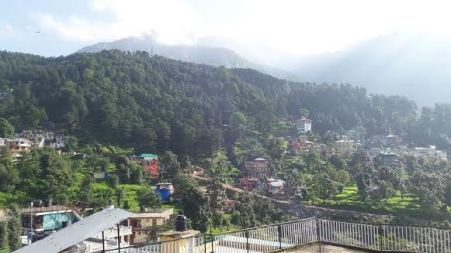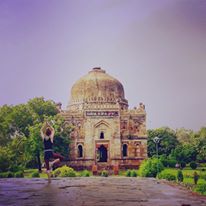What a Month in India Taught me About Yoga
*
Before I begin I want to make clear that the views expressed here are purely objective and that I’m only going on what I experienced, not an in-depth study or survey.
‘What are the differences between practicing yoga in the West and practicing in India?’
This is a question I’ve been asked quite regularly in recent weeks, having embarked on a solo trip with no definitive end on the basis of exploring the ancient practice and contrasting attitudes towards the study of yoga around the world (well in Asia, anyway).
To be honest, I came to India expecting (or maybe hoping) to experience some sort of revelation when it came to my yoga practice, the stories I’ve heard having inspired me to explore the places most attributed with the origins of yoga and somehow find or realise something I haven’t before by immersing myself completely in a strange country and alternative habits, values, and climates. I wanted to really push my boundaries and experience yoga as a lifestyle properly for a little while, embracing new aspects and styles with unfamiliar surroundings and people – places you don’t see on Instagram or enticing Google adverts boasting a luxury yoga retreat and 5-star accommodation. In a way, that’s kind of what happened.
In another way, it’s not. At all.

It sounds obvious to me now, but the biggest thing I’ve realised since coming to India is that it really doesn’t matter where, when, why, or how you practice – yoga is both universal and intensely personal. Yoga is as unique to each practitioner as their individual height, weight, hair colour, daily nutritional requirements and sleeping patterns. Each person’s practice is their own, no matter where you do it, for how long, or at what intensity.
Or at least it should be.
Strangely, one of the things that brought me to this realisation was attending classes that seemed very impersonal, and I was surprised to find that some of the guided classes I attended in McLeodGanj (Dharamsala, North Indian province of Himachal Pradesh) in particular lacked in creativity. Disappointingly they felt like going through the motions of a standard fitness class in the gym back home. At the same time, I understood the reasons behind these elements of the practice.
After speaking with several yoga-instructor friends and enthusiasts alike, I came to understand that some of the more established Indian yogis (I won’t name names for obvious reasons) have been doing the same ‘routine’ sequence and practice every day for over 40 years. Because of this, it has become almost mechanical in its routine progression, and one could almost argue that anyone who’s attended enough of the classes to learn the routine by heart could in theory also ‘teach’ a class themselves.
I want to be careful how I vocalise this, but the truth is I found that this sameness has both positive & negative aspects.
On the positive side, the benefits of 40 years of consistent Ashtanga practice are blatantly apparent in the physique and steady, controlled way these yogis speak.
It’s also inspiring to see that the practice itself has become a sort of constant for them, in the way that prayer or religious devotion has for the many Buddhist monks and nuns inhabiting the Northern Himachal Pradesh Himalayas. It’s ritualistic, which can be a valuable thing in a modern world that otherwise lacks rituals.
On the negative side, the lack of creative exploration & facilitation for the fluctuations of the body from day to day during these routines flies in the face of one of my own beliefs about the practice of yoga – that it is a way of accepting and appreciating change with ease and grace, being open to and moving with it, instead of resisting.
I cannot help but marvel at the depth, widespread popularity, and general understanding and acceptance of the entire practice of yoga in India. I have already learned to open up and trust myself and those around me more thoroughly than I thought possible.
For me, this is what yoga is all about – opening up (both physically and mentally) and accepting what is. Trusting what you have and that which is constantly in flux around you, instead of creating unnecessary anxiety worrying about things outside of your control. A feeling of harmony in body and mind. Harmony within your place in the world.
This includes change.
Change and evolution are part of who we are, the only two constant reliable elements of life that we can depend on outside of our own minds. Being able to tolerate and adapt to natural and environmental changes is crucial for so many reasons, and it confused me to see some of the yogis upholding a practice that seemed quite stagnant and repetitive, unbending even. Maybe I’m just too used to attending creative classes that adapt and cater for the elements and our bodies – a rainy day class at home in Yogahub Dublin once focused on shoulder and chest-opening poses in response to the week of horrible weather we’d just experienced, hunched over and hurried pacing a necessity with disregard to posture or discomfort.
But it seemed to me that the whole ‘oh she’s gone to do yoga in India’ myth and expectation of self-understanding and epiphany-gaining experience is exactly that – a myth.
This is what I mean by having an evolving practice. India as a country is still evolving; it is a land of extremes. Colours, tastes, wealth, poverty, heat, rain…you name it, India has an extreme to meet it.
Avoiding extremes and finding balance has been part of my own yogic journey, and I found the almost extreme lifestyle and all-or-nothing vibe of several of the yoga studios and gurus I attended to be somewhat overwhelming and contradictory in their message. That being said, there were several teachers that were more supple in their ideologies and achieved a more rational balance between the unchanging ritual & the realities of a living daily practise, so I can’t be too generalistic here either.
My point in writing this was to express what I’ve learnt, and to disprove the theory that yoga can only be learned correctly or experienced fully by travelling to India. I’m guilty of harbouring beliefs such as this, although deep down I sort of knew the truth for what it is – that yoga is accessible anywhere, to anyone, and in whatever capacity you have to experience it and your own body. Even on a balcony in a tiny hostel in Sri Lanka where the cleaning lady tries to sweep crumbs and dust from within an inch of the mat around you. I’m still practicing. I’m still moving. Evolving, changing. And that’s ok too.
Read more like this on Jenny’s blog Upward Facing Blog




